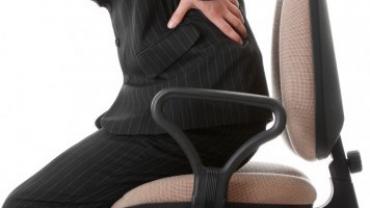
Fearmongering headlines about the health risks of being sedentary would have you believe that working a desk job and spending your day in a cubicle is a one-way ticket to disaster. Medical organizations academic institutions and media outfits including the American Academy of Family Physicians Runner’s World magazine and Harvard University have all publicized the numerous health risks associated with spending too much time sitting down. From a loss of bone mineral density to increased blood insulin levels and greater risk for cardiovascular disease and all-cause mortality it seems that if an individual’s profession requires a significant amount of sedentary work then earning a living may be in direct conflict with long-term health. In fact it’s even been said that being sedentary is so harmful that “sitting is the new smoking.”
But what about the other side of this issue? If sitting all day is so detrimental then surely the opposite must be true: standing for the majority of the day is beneficial. Not so fast. Ask a nurse line cook convenience store clerk or anyone else who spends entire shifts on their feet whether this is a good thing and they’ll probably fill you in about their varicose veins leg and lower back pain and other musculoskeletal issues they experience.
So it seems that while sitting for extended periods of time can be harmful for health prolonged periods of standing may be no better. What holds true for vitamins and minerals likely holds true for physical movement: there’s a U-shaped curve wherein a deficiency causes problems but in some cases an excess brings problems as well. Researchers have found that there is “a linear dose-response relationship at least up to a point between physical activity and health and functional effects.”(Emphasis added.) Somewhere in between too much and too little there’s a “Goldilocks” amount that is just right.
The shift from agricultural and industrial work to white-collar jobs which largely involve sitting in front of computers has meant that a significant portion of the population of the industrialized world no longer gets as much physical movement during the work day as did generations past. Fortunately short of giving two weeks’ notice and taking a job as a bicycle messenger there are many interventions that can help break up sedentary time and introduce periods of movement throughout the day.
This is important because research indicates that isolated bouts of exercise—such as hitting the gym after work or participating in an adult recreational sports league on the weekend—may not be enough to counteract the adverse effects of extended periods of time spent sitting. Long bouts of being sedentary can increase risk for metabolic syndrome even in individuals who exercise regularly. It may be that in addition to dedicated periods of exercise deliberate increases in non-exercise activity thermogenesis (NEAT) are required to make a dent in the negative influence of too much sitting. NEAT includes processes over which individuals have no conscious control such as the energy expended in digestion but it also encompasses activities that people can intentionally do more of such as taking the stairs instead of the escalator choosing a parking space further away from their workplace’s entrance and getting up to talk to coworkers in person rather than sending emails or calling. It simply means more physical activity but not necessarily anything one would consider “a workout.”
The next blog post on this subject will look more closely at the health risks associated with sedentary work and strategies for sedentary workers to be more physically engaged throughout the day. From stand-up desks and treadmill desks to simply doing “cubicle calisthenics” which requires no special equipment at all there are many ways to try and ward off some of the health risks associated with spending significant portions of the day seated.
A third installment will look at the opposite side of this coin: the effects of prolonged standing and products and strategies intended to help those professionals whose work requires them to be on their feet. We will see that perhaps standing all day may not be the best way to counteract time spent seated.